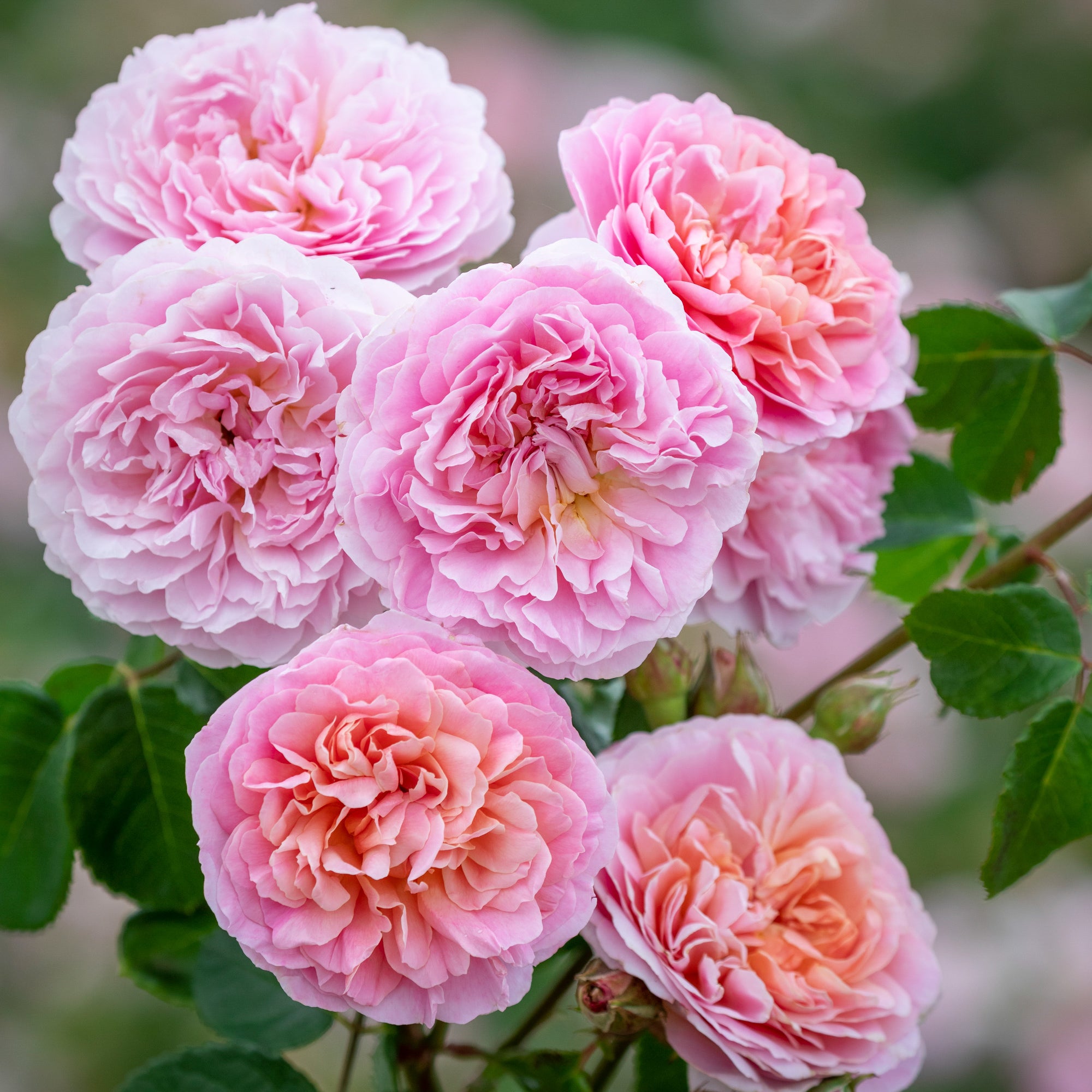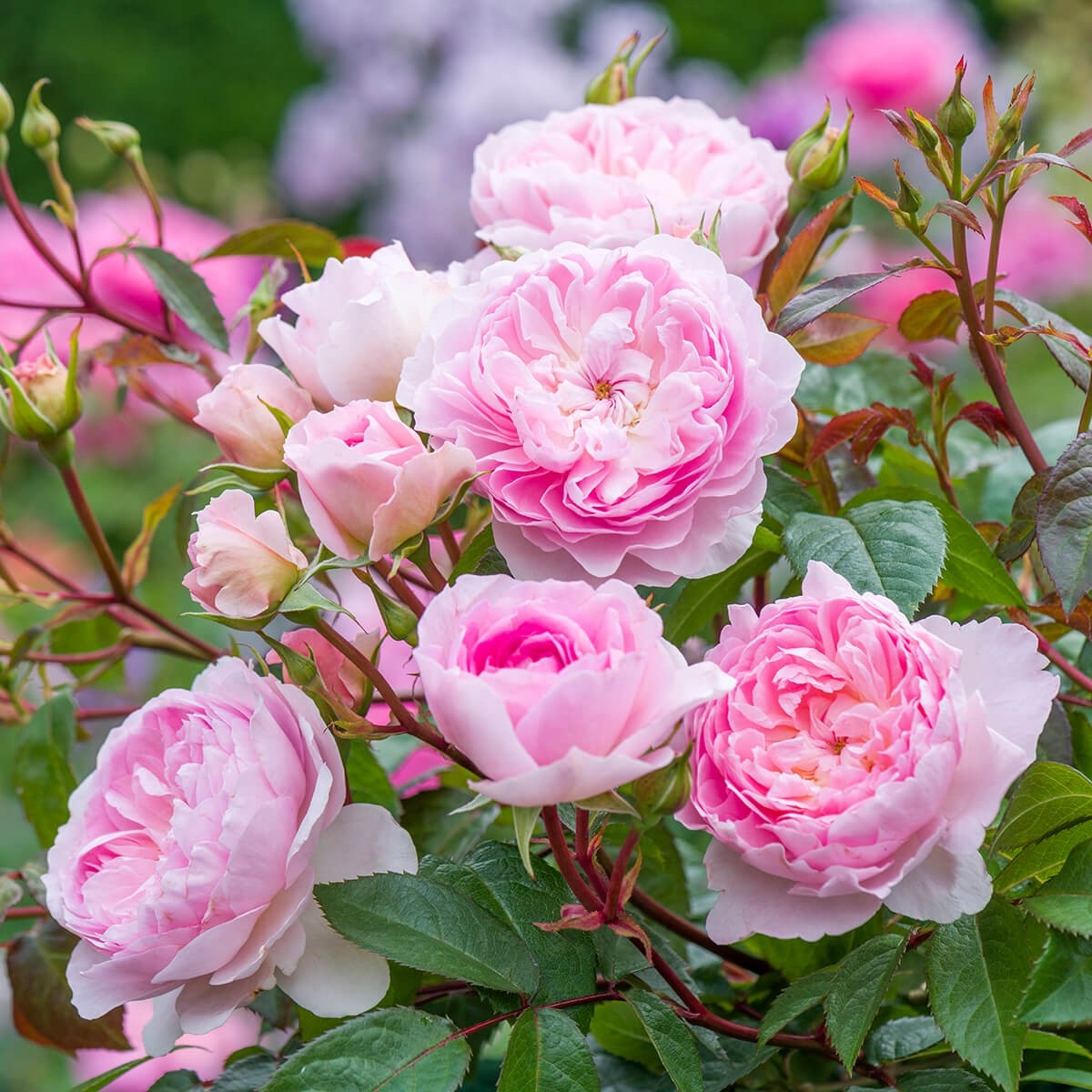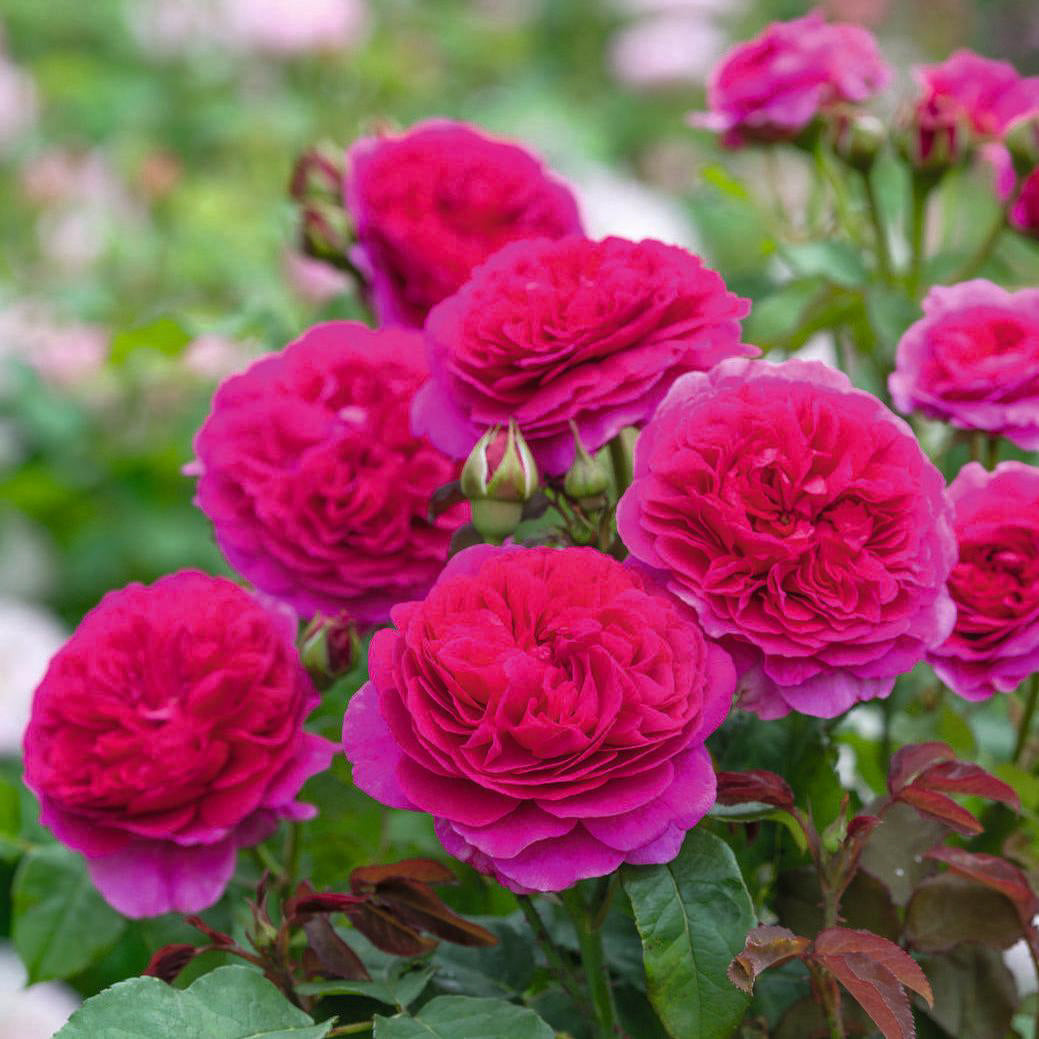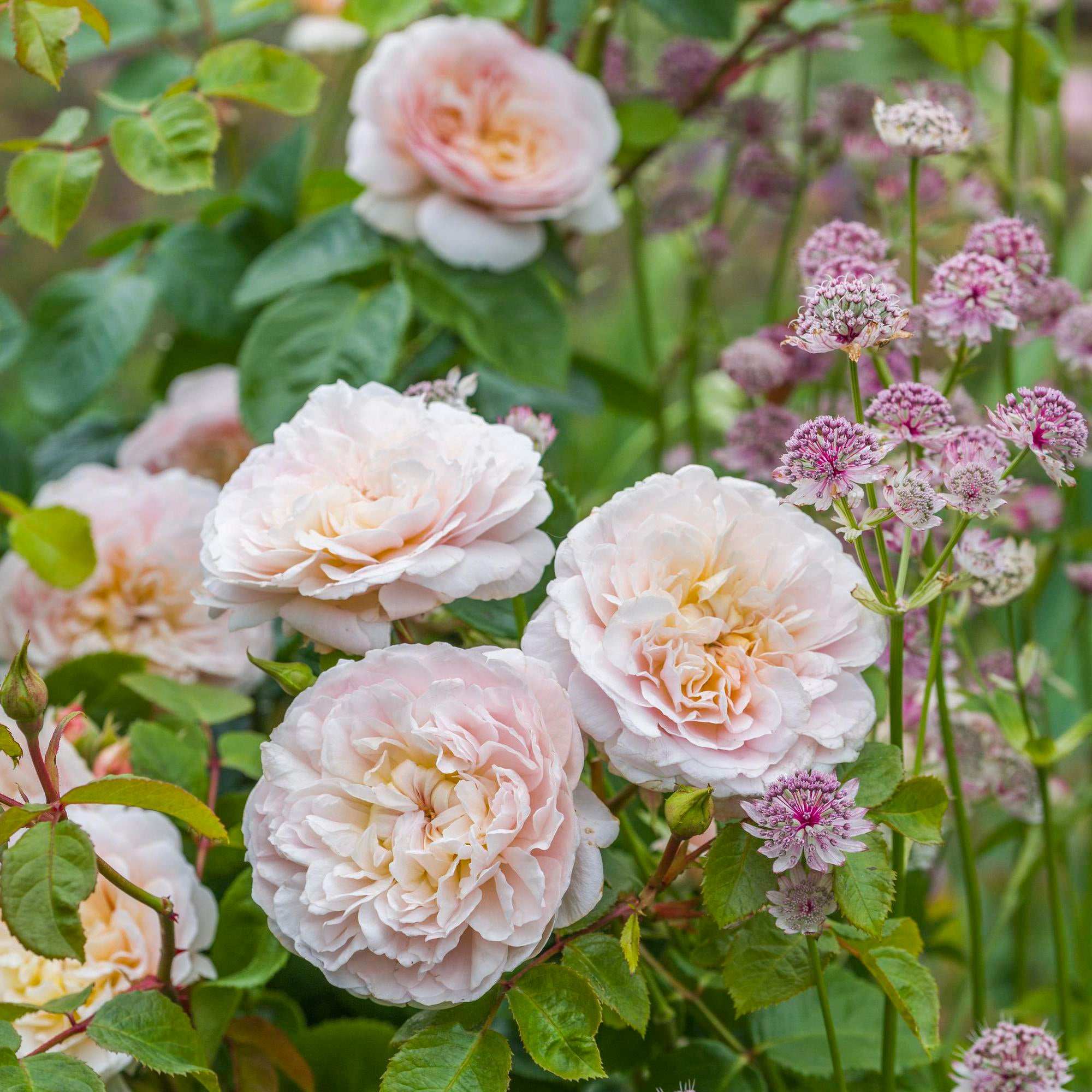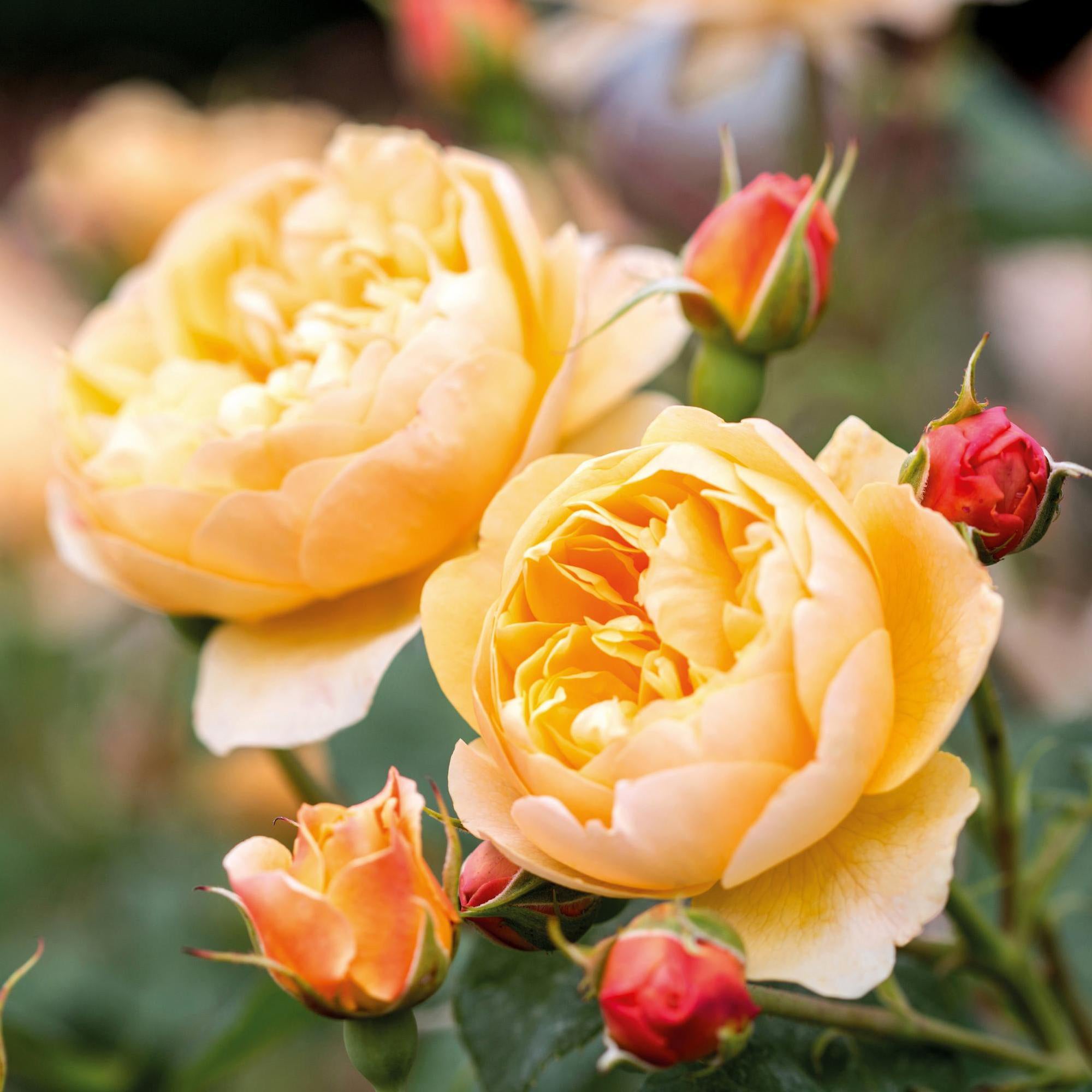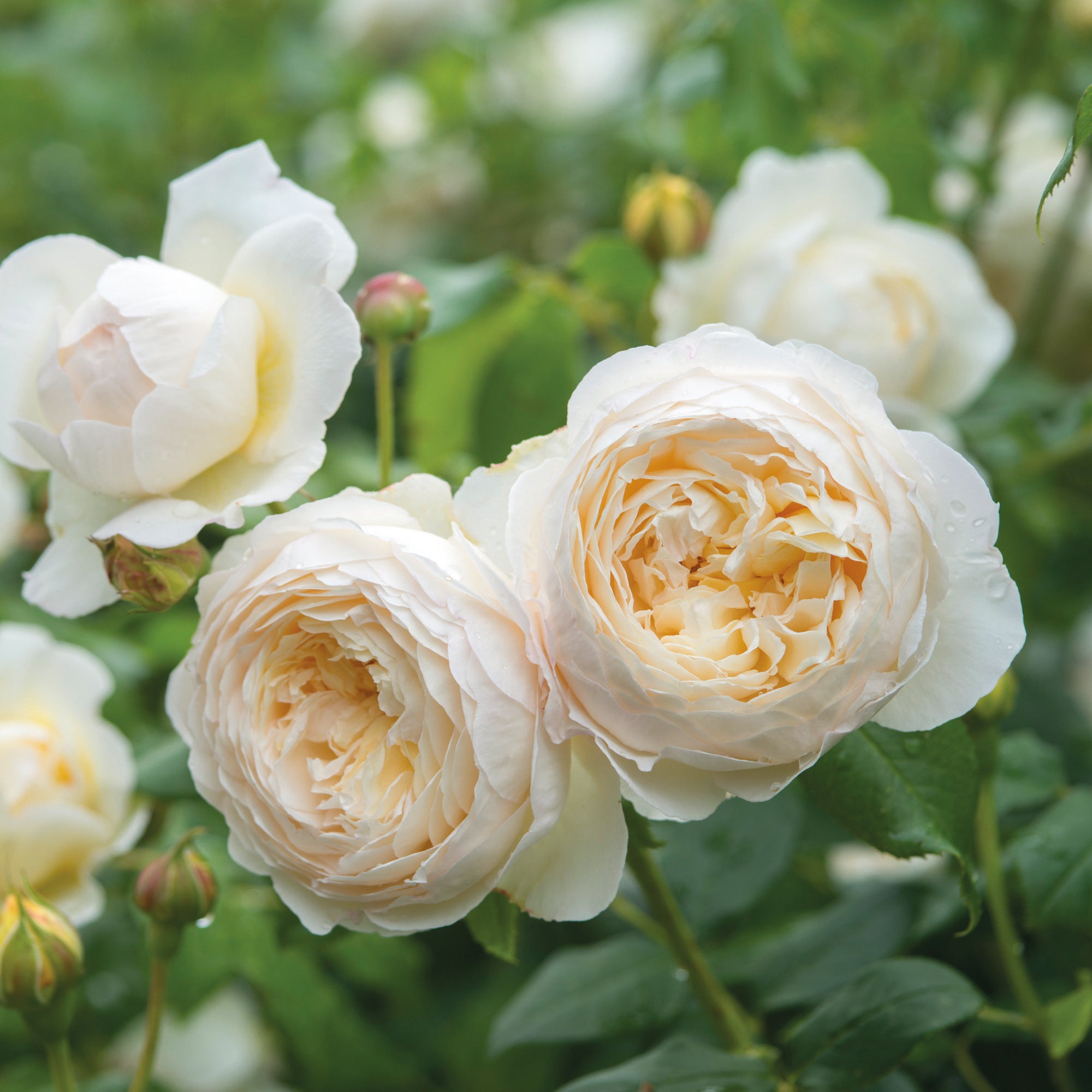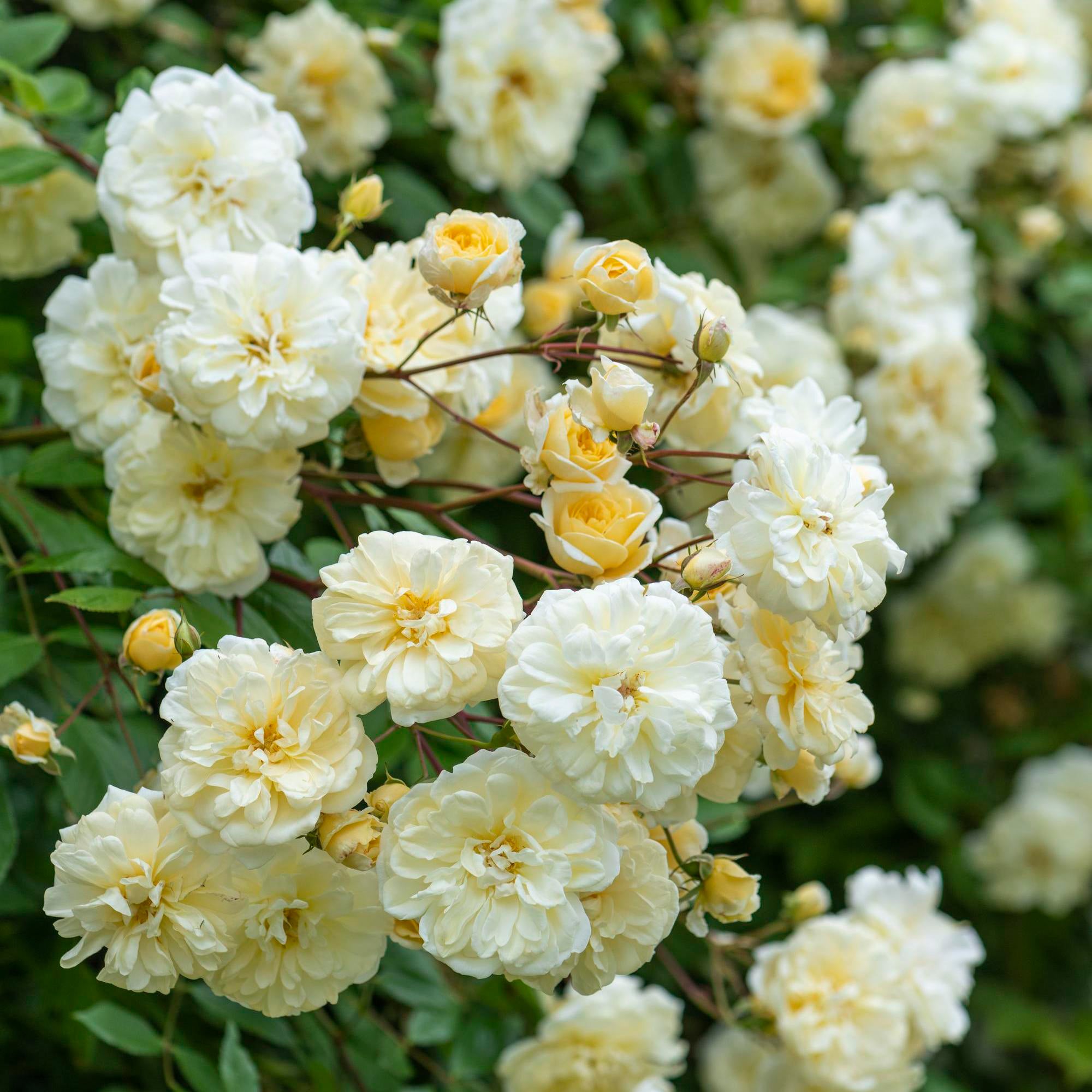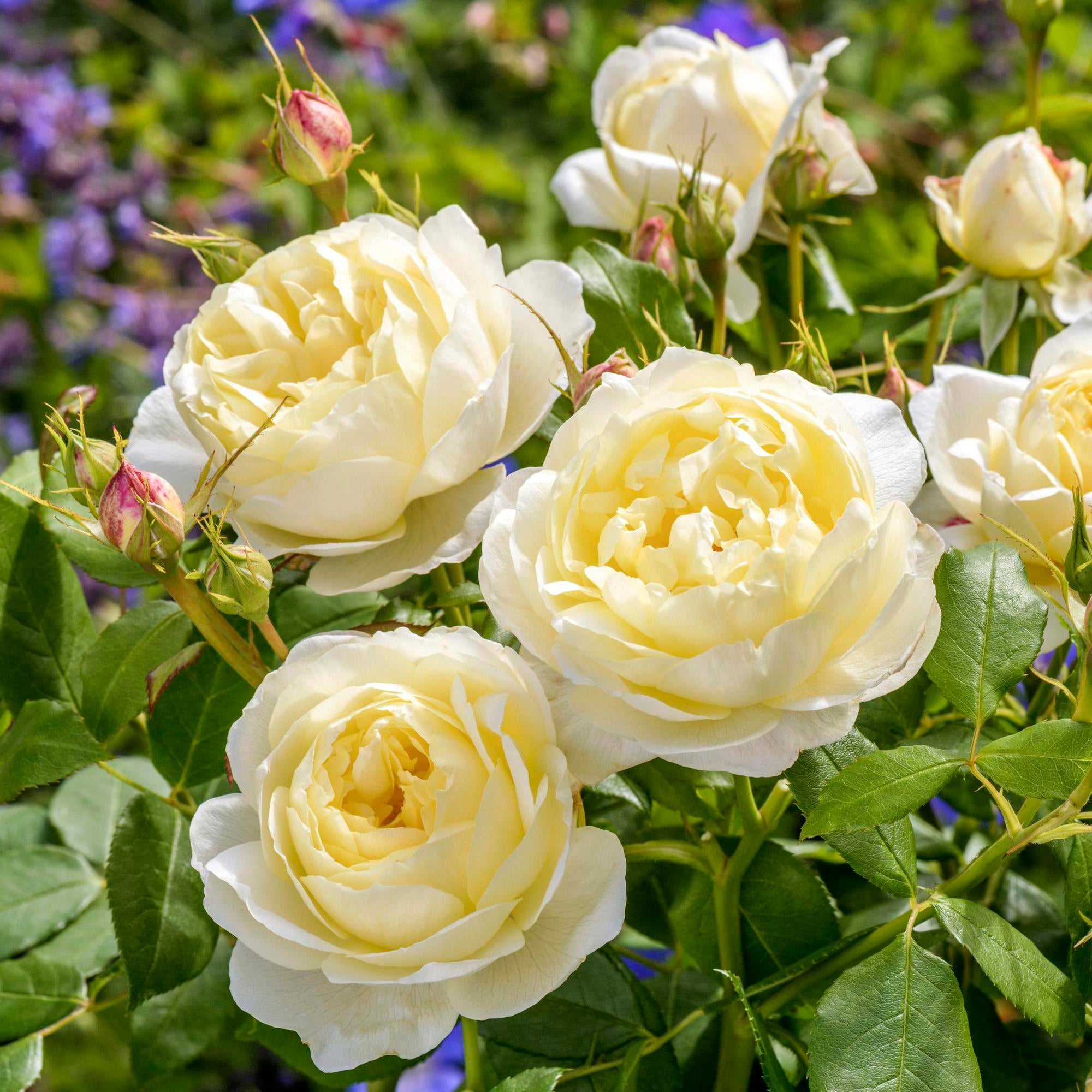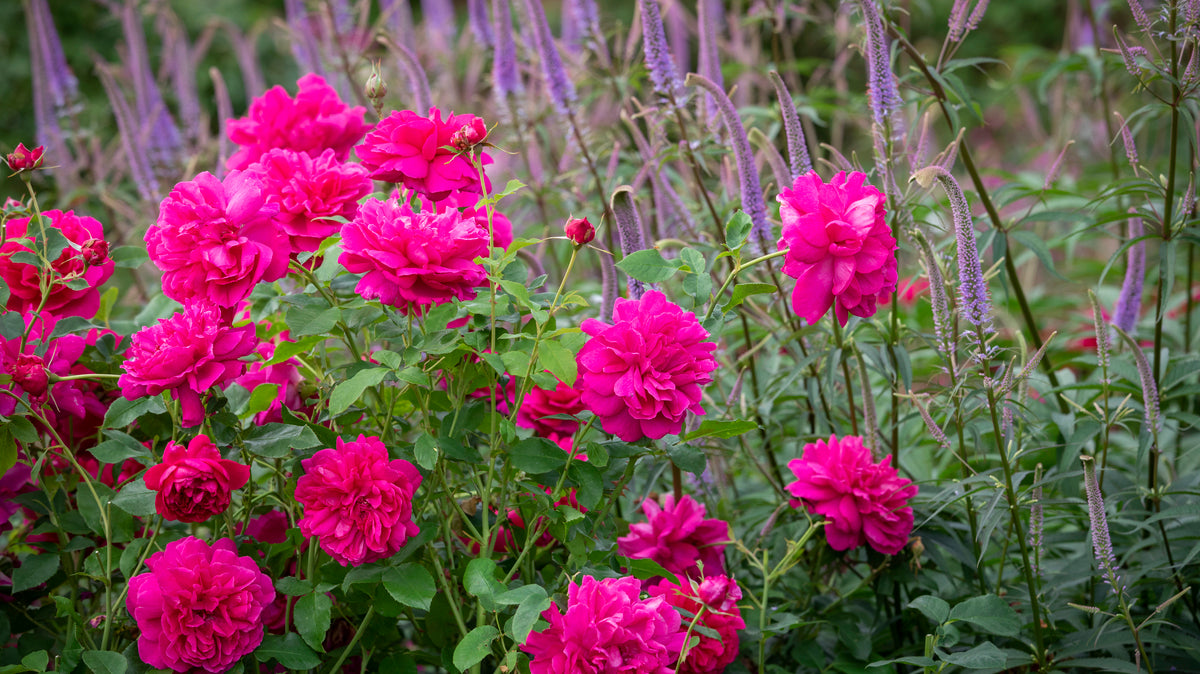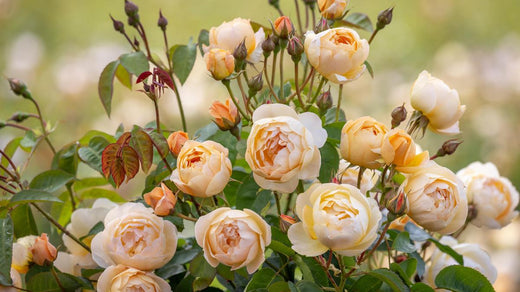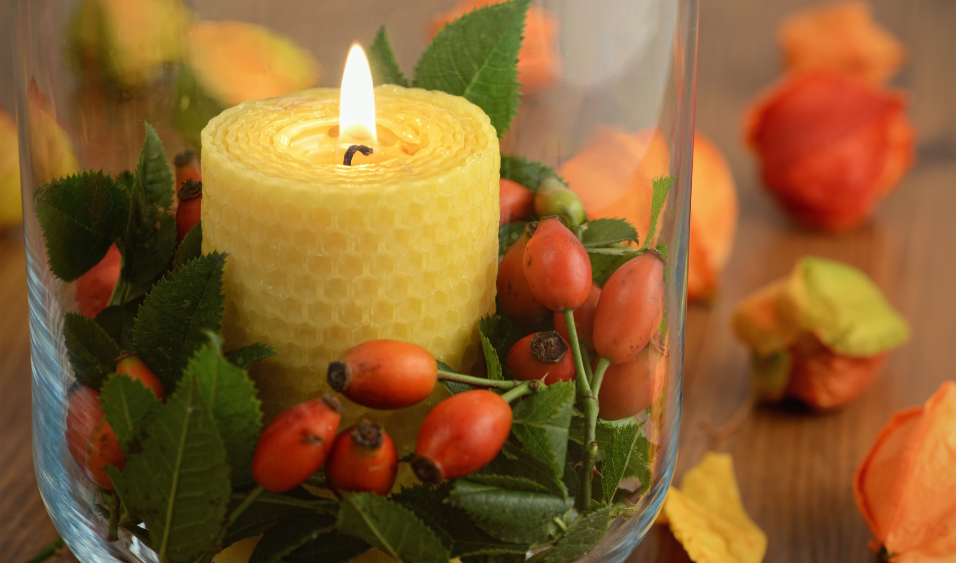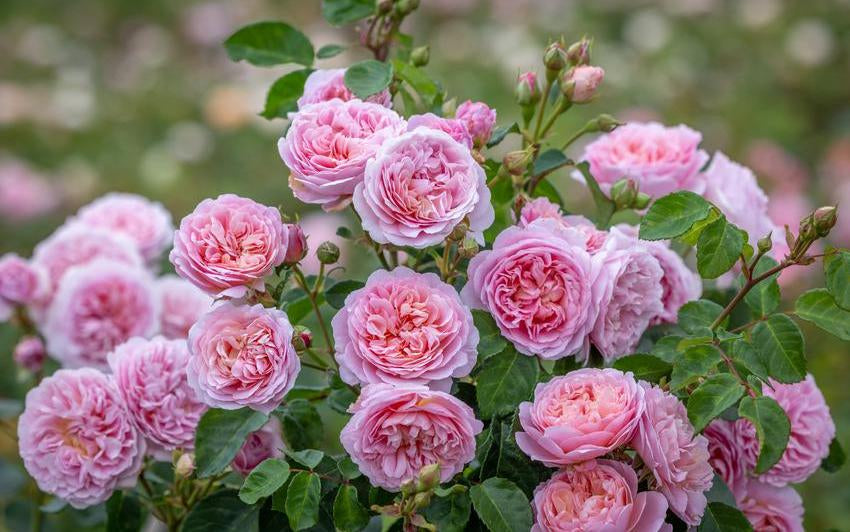Winter brings a time of rest and quiet beauty in the garden, and David Austin English Roses are no exception. While these exquisite plants are hardy and resilient, they thrive with thoughtful care during the colder months. Whether your garden faces harsh frosts or milder seasonal changes, this guide will ensure your English Roses are well-prepared to burst into leaf come spring.
Knowing your garden’s growing zone is vital for planning effective winter care. English Roses, are adaptable to a wide range of climates but benefit from tailored protection based on their environment:
- Zones 3 to 5: These zones endure the coldest winters with extended freezing temperatures. A blanket of snow can act as natural insulation, holding temperatures at 32°F (0°C) around the rose. However, freezing winds and unseasonably long temperature dips can be damaging. In these zones, roses require significant protection to thrive.
- Zones 6 to 8: Moderate winters in these zones bring frosts but are less extreme. Even so, ice storms and rapid freeze-thaw cycles pose a risk. A protective layer of mulch is essential to shield against temperature fluctuations and drying winds.
- Zones 9 to 11: In warmer climates, roses rarely go fully dormant. Winter care focuses on light pruning, pest management, and maintaining overall plant health.
Start with a tidy garden
Prepare your roses by tidying up the garden:
• Remove dead or diseased leaves to prevent overwintering pests and diseases.
• Dispose of any material affected by black spot or rust to reduce recurrence in spring.
Stop feeding and pruning before winter
Stop feeding your roses about six weeks before the first frost to allow them to transition into dormancy.
- Avoid heavy pruning in late autumn. Instead, lightly trim long or unruly stems to prevent wind damage. Reserve major pruning for late winter or early spring.
Mulch and protect against frost in colder zones
• Apply a thick layer of mulch, such as well-rotted manure, straw, or bark, around the base of your roses once the ground begins to freeze. This helps insulate the roots.
• In zones 3 to 5, mound soil over the crown of the rose for additional protection. This method is especially effective for newly planted roses.
Provide extra insulation for severe frosts
For harsher winter conditions:
• Wrap your rose bushes with breathable materials like horticultural fleece or burlap to protect against drying winds and frost damage.
• Build a frame around the plant and fill it with insulating materials like straw or leaves for added warmth.
In milder climates, where winters are less severe:
• Remove weak or damaged growth to keep plants tidy.
• Prune lightly for shaping if needed, but avoid heavy pruning until later in winter.
• Monitor for pests, as mild winters can allow some to remain active.
Winter care for warmer zones
In milder climates, where winters are less severe:
• Remove weak or damaged growth to keep plants tidy.
• Prune lightly for shaping if needed, but avoid heavy pruning until later in winter.
• Monitor for pests, as mild winters can allow some to remain active.
Winter care for potted roses
Potted roses need extra attention during winter, as their roots are more exposed:
• Move pots to a sheltered area, such as an unheated greenhouse, garage, or against a south-facing wall.
• Wrap the pots with insulating materials like bubble wrap or fleece to protect the roots from freezing.
• Water sparingly, ensuring the soil doesn’t dry out completely.
Appreciating the beauty of winter dormancy
Winter may seem like a quiet time in the garden, but it’s one of preparation and promise. During this period, your English Roses are resting and storing energy for their vibrant summer displays. With thoughtful winter care, you ensure your roses will emerge healthy and ready to reward you with their signature beauty and fragrance.













